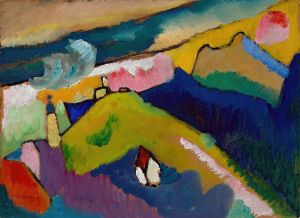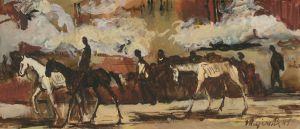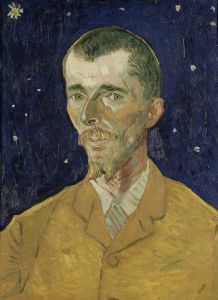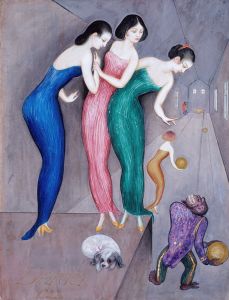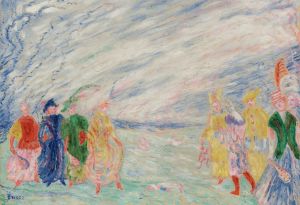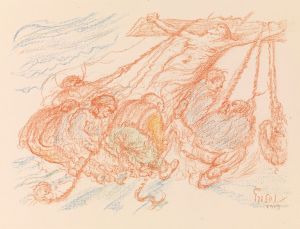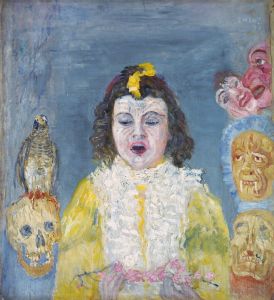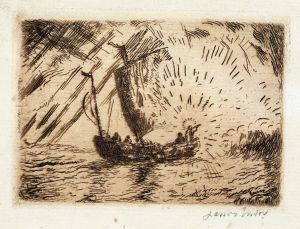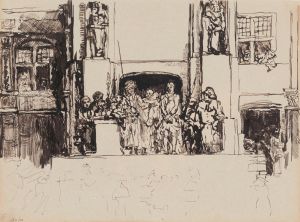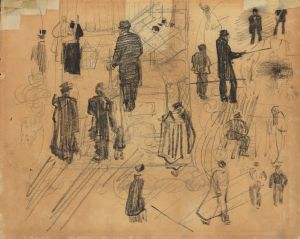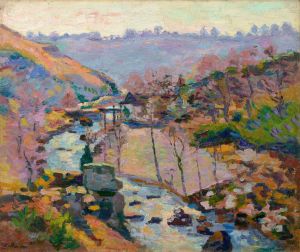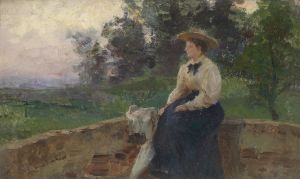
De kokette dood
A hand-painted replica of James Ensor’s masterpiece De kokette dood, meticulously crafted by professional artists to capture the true essence of the original. Each piece is created with museum-quality canvas and rare mineral pigments, carefully painted by experienced artists with delicate brushstrokes and rich, layered colors to perfectly recreate the texture of the original artwork. Unlike machine-printed reproductions, this hand-painted version brings the painting to life, infused with the artist’s emotions and skill in every stroke. Whether for personal collection or home decoration, it instantly elevates the artistic atmosphere of any space.
James Ensor, a prominent Belgian artist known for his avant-garde and often provocative works, painted "De kokette dood" ("The Coquettish Death") in 1887. Ensor's oeuvre is characterized by its exploration of themes such as death, masks, and the absurdity of human existence, and "De kokette dood" is a quintessential example of these motifs.
The painting depicts a skeletal figure, representing death, adorned in a lavish, colorful dress and hat, embodying the concept of death as a coquettish or flirtatious entity. This portrayal aligns with Ensor's frequent use of skeletons and masks to symbolize the hidden truths and underlying grotesqueries of human life. The skeletal figure's attire suggests a parody of societal norms and vanities, a common theme in Ensor's work, where he often critiqued the superficiality and pretensions of the bourgeoisie.
Ensor's style in "De kokette dood" reflects his transition from traditional realism to a more expressive and symbolic approach. The use of vibrant colors and bold brushstrokes in the painting highlights the contrast between the liveliness of the attire and the macabre nature of the skeletal figure. This juxtaposition serves to emphasize the absurdity and inevitability of death, a recurring theme in Ensor's art.
The painting is also notable for its reflection of Ensor's personal experiences and the cultural context of late 19th-century Belgium. During this period, Ensor was part of the avant-garde group Les XX, which challenged conventional artistic norms and embraced innovative techniques and themes. "De kokette dood" exemplifies this avant-garde spirit, as it defies traditional representations of death and instead presents it in a manner that is both unsettling and satirical.
Ensor's fascination with death and the macabre can be traced back to his upbringing in Ostend, Belgium, where he was exposed to the eclectic mix of carnival culture and the somber realities of life by the sea. This environment influenced his artistic vision, leading him to explore the dualities of life and death, beauty and decay, in his work.
"De kokette dood" is housed in the Royal Museum of Fine Arts in Antwerp, where it continues to captivate audiences with its unique blend of humor, horror, and social commentary. The painting remains an important piece in the study of Ensor's work and the broader context of Symbolism and Expressionism in European art.
In summary, "De kokette dood" is a striking example of James Ensor's innovative approach to art, combining elements of satire, symbolism, and expressionism to explore themes of death and societal critique. Through its vivid imagery and thought-provoking composition, the painting invites viewers to reflect on the nature of existence and the often absurd interplay between life and death.






